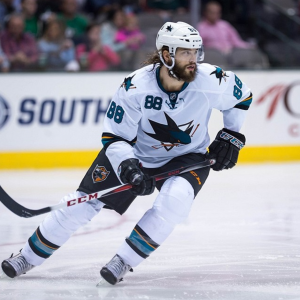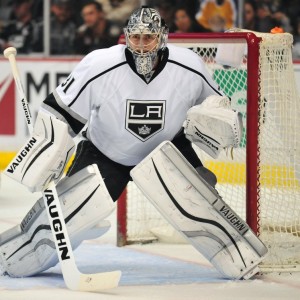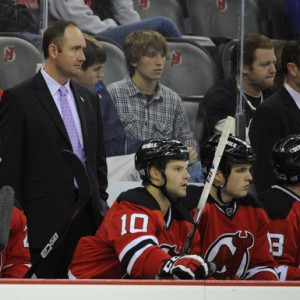The new NHL overtime rules will give us 3-on-3 hockey. My own opinion is that, like the shootout, it is another gimmick. But gimmicks have their place in sports: the basketball (NBA) rule where the team can advance to the ball to front court with a timeout is a gimmick intended to make the final moments of a game more exciting. And it works. Baseball (MLB) has a gimmick that it can’t decide if it likes or not. One league plays with a designated hitter, the other doesn’t.
The thing about gimmicks, they are in the rule book and however one feels about the rule is irrelevant. In the case of NHL hockey, 3-on-3 is now the rule and it’s a big deal. Roughly 25% of NHL games are tied at the end of regulation. That means over 12% of available points over the course of a season are decided after regulation ends. Most of those points are expected to be decided in 3-on-3 play.
So how should a team approach this new overtime; specifically, how should the San Jose Sharks approach it? And are there unexpected aspects to this new overtime that the Sharks could effectively utilize?
One thing that 3-on-3 hockey seems destined to create are odd-man rushes. In 5-on-5 hockey, most of the odd-man rushes are 5-on-4 and so brief that one never thinks of them as odd-man rushes. The chances of scoring on a 5-on-4 rush is minimal. But the chances of scoring increase as there are fewer participants in the odd man rush. By the time one gets to 3-on-2 rushes, the odds of scoring become pretty good. The odds continue to get better at 2-on-1 and are better still on a 1-on-0, a breakaway.
The First Decision

The first choice a coach needs to make is whether to approach 3-on-3 overtime from an odd-man rush prevention strategy or an odd-man rush creation strategy. Because in 3-on-3, an odd man rush that doesn’t succeed at one end is very likely to become an even better odd man rush opportunity going the other way. A 3-on-2 break that fails at one end can quickly turn into a 2-on-1 or a breakaway going the other direction.
In essence, this is a strategy long associated with boxing. Do you want to be puncher or a counter-puncher.
For the Sharks, I think this is an easy call. Prevention. Counter-punch. The Sharks have plenty of talent, but it’s not particularly fast talent. The team’s best passer, Joe Thornton, is known for slowing play down. The team’s best goal scorer, Joe Pavelski is a great athlete but not a particularly fast player. Slowing down the game fits the Sharks better than a chaotic high-speed game.
The Key Sharks Players
If prevention is the choice, that suggests putting better defenders with good puck possession skills on the ice. Pavelski is among the Sharks best in that area, along with Marc-Edouard Vlasic.
The best defense is to control the puck yourself. In the case of the 3-on-3 hockey, face-offs can play a bigger role than in regulation. This an area where the Sharks have had success. Thornton, Pavelski and Ben Smith are among the Sharks’ better face-off men.
One thing people have wondered: will teams send out two defensemen and one forward or two forwards and one defenseman? I’m not sure that is the right way to think about 3-on-3 hockey. 3-on-3 redefines the positions on the ice; player assignments in 3-on-3 will be considerably different from 5-on-5. Still, if the choice is prevention, one would expect to have two players high in the offensive zone and just one down low, making it so the worst odd-man rush they might face on defense would be a 3-on-2.

One of the more interesting overtime usage questions will be around Brent Burns. Burns is great on offensive transitions while problematic handling defensive transitions. If prevention is the mantra, I’d expect to see less of Burns with more of Paul Martin and Justin Braun. Similarly, I’d expect Brenden Dillon to wind up watching most of the 3-on-3 play from the bench. Tommy Wingels physical style works well in 5-on-5, but I suspect he’ll be among the players less called upon in overtime.
One player that may benefit from the overtime is Patrick Marleau. How much burst the 36-year-old forward will have come overtime is an open question, but I suspect it will be sufficient as long as new coach Peter DeBoer doesn’t burn Marleau down the way prior coach Todd McLellan did. Marleau has plenty of speed and plenty of skill to finish. He has very good instincts for poaching on defense and breaking free into open ice. If the Sharks decide to play an attacking style, I suspect it will be when Marleau is on the ice.
Two players that I suspect will play bigger roles in 3-on-3 than they will during regulation are the aforementioned Ben Smith and Matt Nieto. Nieto is young, fast and will not play big minutes in regulation, so he should be fresh and fast for the overtime. Smith is a good puck possession player, clever and strong in the face-off circle. He is not likely to make the mistakes that lose a game, but has skills can put the team in a position to win.
Chris Tierney should play a major role in overtime. His creative game seems ideal for open ice. I could easily imagine a situation where Ben Smith takes a face-off, then comes off the ice for Tierney.
Something Completely Unexpected?
One thing to remember is that at the end of 3-on-3, should the score remain tied, it is back to a shootout. And on that front, the Sharks are a bit of a mystery. Yes, they have several capable shooters. But their goalie is expected to be Martin Jones and how he plays during shootouts might impact the Sharks strategy. If Jones is good in shootouts, then prevention and slowing down play would be the right strategy.

Well, there is a record on how good Jones is in shootouts. It is a very limited record. Jones has faced only 18 shootout attempts. But here’s where it gets intriguing. Jones has stopped 17 of 18. Small sample and likely not sustainable, but no one that has faced more than 10 shots in the past two seasons has done better. And the sample size isn’t all that small. Last season, the NHL’s gold standard in goaltending was Carey Price. He faced 22 shootout attempts (18 stops). Another top goalie, Pekke Rinne faced 25 attempts (18 stops).
Could Martin Jones be the best shootout goalie in hockey? It is obviously premature to draw any conclusions, but his early results suggest that it is possible. Jones beat Anaheim in a 9-round shootout and Colorado in a 3-round shootout. He lost a 6-round shootout against Nashville. To date, the Preds James Neal is the only player to have scored on Jones in a shootout.

New Sharks head coach Peter DeBoer has reason to despise the shootout. In his last full season coaching the New Jersey Devils, his team managed to lose all 13 games that went to the shootout. But life could be much different in San Jose. The shooters are better and the goalie might just be among the best. So is there a way to take advantage of this? Yes there is. And most people won’t like it.
Many years ago, legendary North Carolina basketball coach Dean Smith implemented an offense called the four corners. In a pre-shot clock era, it was a way to eat clock by using the maximum spacing on the floor, while forcing teams to defend players in space that were very difficult to defend. The four corners also created a lot of psychological pressure on opposing coaches and players. It was very effective for North Carolina, very frustrating for their opponents. Growing up near the University of Maryland, a major rival of North Carolina, I got to see plenty of the four corners and how it fundamentally changed the game.
The Sharks would be wise to at least consider what adding a similar wrinkle might offer. 3-on-3 overtime is designed to open up the ice and speed the game up. But more open ice can also be used to slow the game down. Rules can have unexpected consequences.
If Martin Jones is really good in the shootout, and certainly the results to date are promising, perhaps the Sharks should employ strategies to slow down the 3-on-3 game and play for the shootout. A variant of the four corners strategy would accomplish that. The basic concept can be pretty simple. The goalie possesses the puck with the three skaters spread out well up the ice. If a defensive skater comes to challenge the goalie, a good outlet pass becomes a 3-on-2 rush the other way. Or a 2-on-1. Or a breakaway. The NHL would probably hate this sort of slowdown tactic (the NCAA added a shot clock in large part because of Smith’s four corners and other similar schemes), but you play to win the game. And as much as this tactic might not be popular, adding another element of strategy to the game should be welcome.
The NHL rules that work against this sort of delaying scheme are fuzzy at best. A few years back, Philadelphia kept delaying their zone exit against Tampa Bay’s 1-3-1 trap defense when Tampa refused to forecheck. As long as the team moves the puck, play continues. If a team can do that during 5-on-5 play with far less open ice, I can imagine that tactic being refined and used effectively for 3-on-3 hockey.
At stake is the outcome of the roughly 20 overtime games the Sharks (or any other team) can expect over the course of a season. If using the right strategy takes a team from winning 40% of their games in overtime/SO to winning 60% of their games, that is an expected differential of four points over the course of a season. Last year, the Sharks managed to grab just 40% of the overtime points that were available to them. The average separation in the standings between the top 12 teams in the West last season was under two points, meaning four points is enough to jump a couple notches in the standings.
If the Sharks have the best shootout goalie in hockey, they should take advantage of that asset. It is better to win in the shootout than lose in 3-on-3. After all, winning is the bottom line.